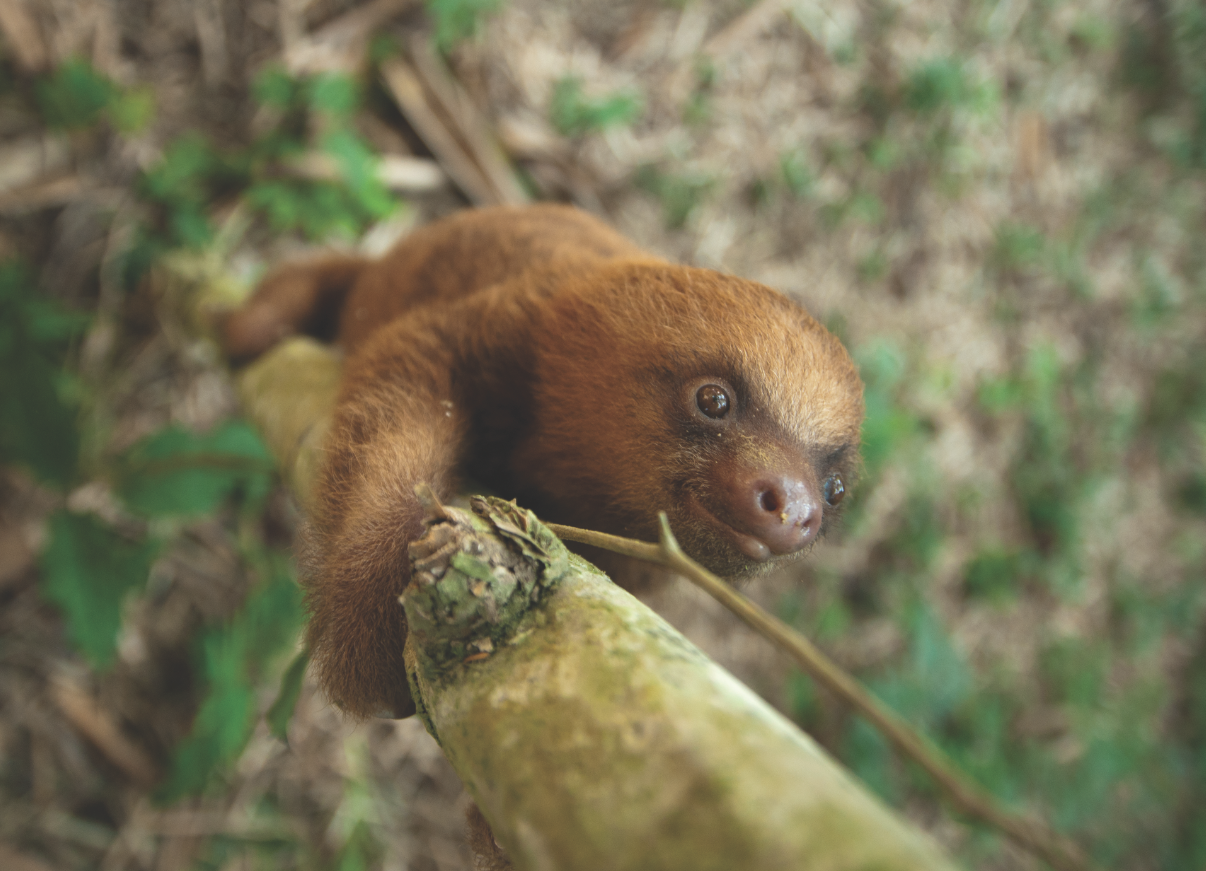22/07/2016
Looking out of the window of the aeroplane I can see nothing but clouds. It’s only a short flight from Cusco – a mere 25 minutes – to my destination, and the anticipation is overwhelming. As the fasten seat belt sign flashes and the Captain announces our descent, the clouds finally start to clear and I gasp as I catch my first glimpse of the Amazon rainforest below.
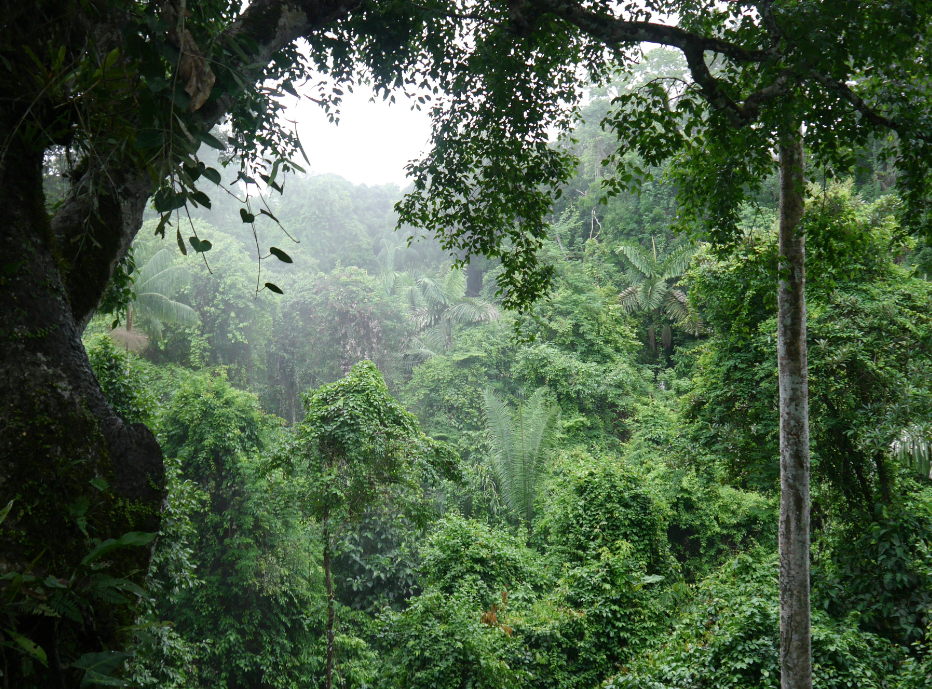
Puerto Maldonado airport is small, and as I step onto the runway I’m absorbed by humid air. This is it, the trip I have been waiting for, my first adventure in the Amazon jungle of Southern Peru.
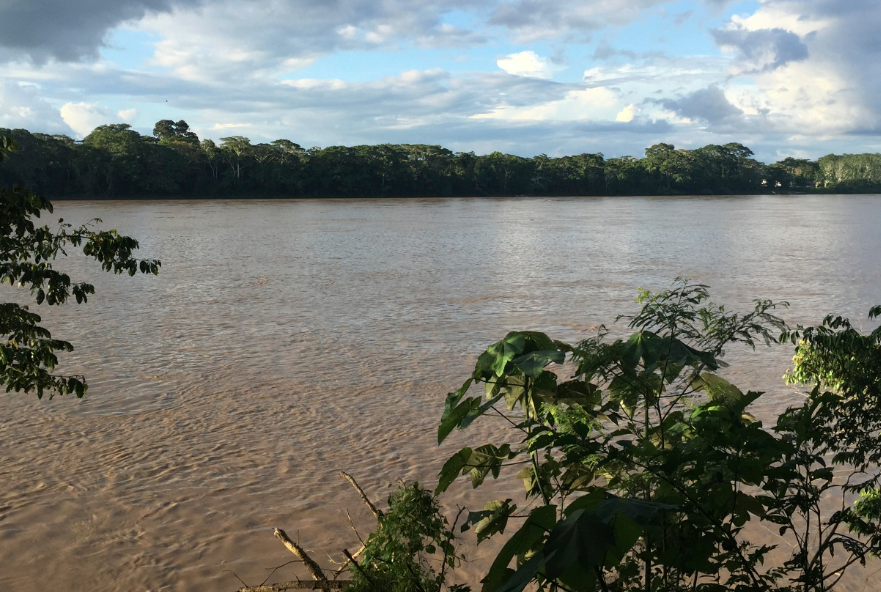 The Inkaterra staff wait for me outside and we take a short bus journey to the nearby port. Here, our bags are loaded and we chat with the friendly locals before boarding. A small shop sells trinkets and there I spot what I’ve been looking for – a small carved sloth – the whole reason of my visit to the Amazon. I’ve been a sloth lover for as long as I can remember and, refusing to have my first encounter with them in a zoo, have journeyed all the way to the rainforest in the hope of seeing one. Not wanting to tempt fate, I decline the shop lady’s kind price offers and step onto our boat.
The Inkaterra staff wait for me outside and we take a short bus journey to the nearby port. Here, our bags are loaded and we chat with the friendly locals before boarding. A small shop sells trinkets and there I spot what I’ve been looking for – a small carved sloth – the whole reason of my visit to the Amazon. I’ve been a sloth lover for as long as I can remember and, refusing to have my first encounter with them in a zoo, have journeyed all the way to the rainforest in the hope of seeing one. Not wanting to tempt fate, I decline the shop lady’s kind price offers and step onto our boat.
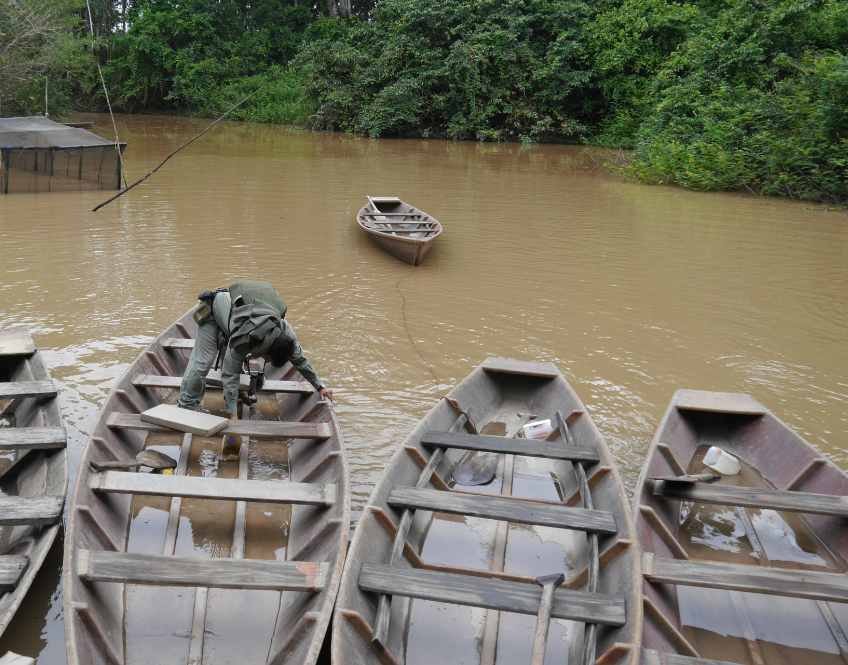
Inkaterra has two lodges in the Amazon – Inkaterra Reserva Amazónica and Inkaterra Hacienda Concepcion located along the Madre de Dios river – both operating under Inkaterra’s eco-tourism philosophy,. Inkaterra Reserva Amazónica was the first of the five Inkaterra hotels, built by Founder Jose Koechlin 40 years ago. The main lodge houses a large open plan restaurant and reception area. Airy and rustic, the lodge has no exterior walls, meaning you can spend your days looking out over the river and the hotel’s sprawling gardens. Luckily, there is mosquito netting up to protect you from little critters.
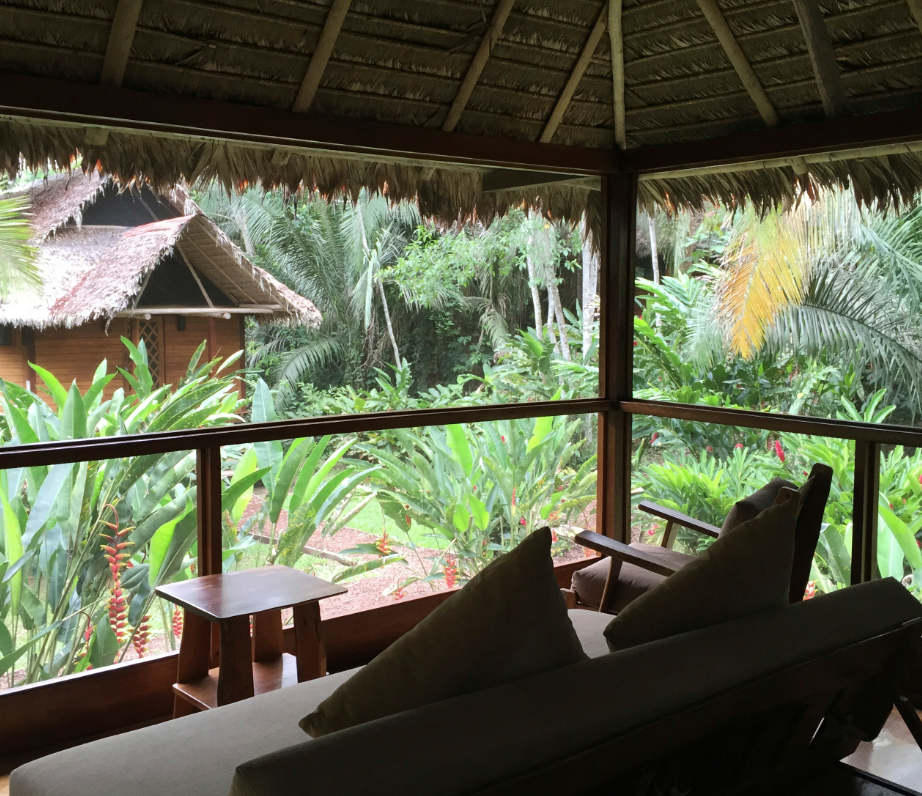
I settle myself into one of 35 garden cabanas that are peppered around the hotel ground. Mine is one of the furthest from the main reception, meaning I have a wall of thick Amazon jungle bordering my window. The indoor hammocks overlooking the river look tempting, but I was keen to head out on one of Inkaterra’s popular jungle excursions – I had a date with a sloth!
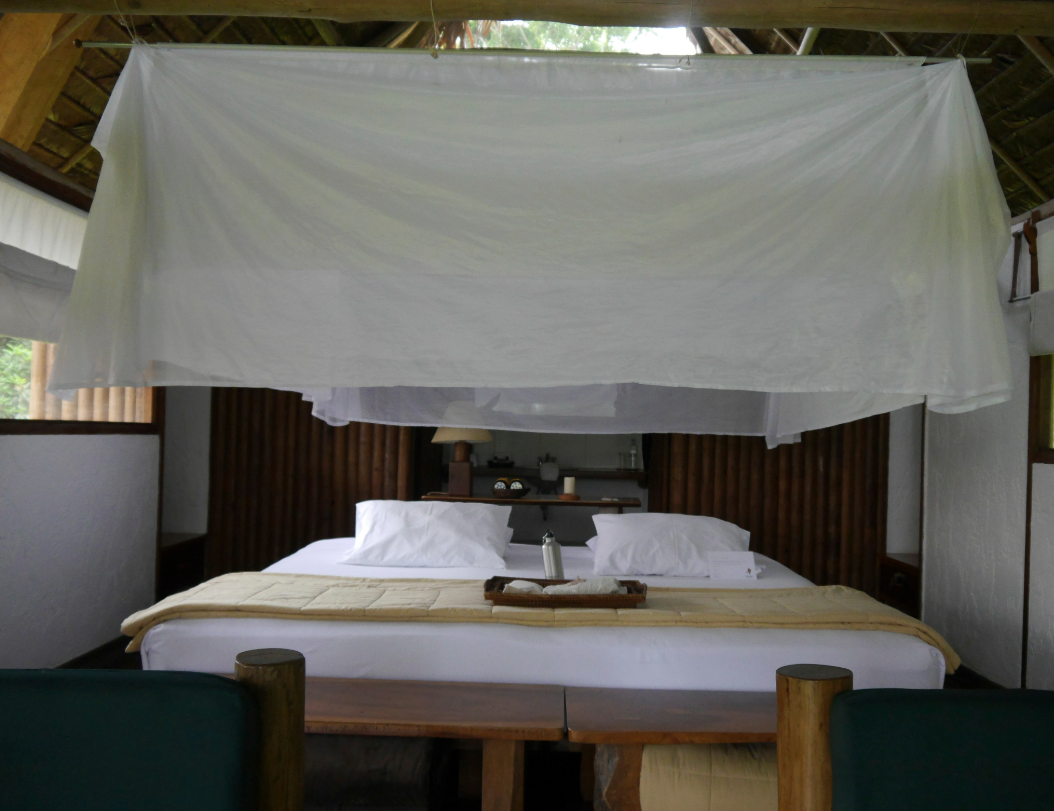
The Inkaterra Canopy Walkway is only a short distance from the hotel by boat, but as you approach the looming 95ft tower, joining a series of 8 suspension bridges and 7 platforms, you couldn’t feel more remote. With a mild fear of heights, this excursion couldn’t have been more demonstrative of how much I wanted to see a sloth. I walked from bridge to bridge – feeling like Indiana Jones – spinning around every time a member of the group whispered, “Look!” We spotted macaws, strange insects (with names I couldn’t pronounce, yet alone spell) monkeys and even some evidence that some porcupines had climbed the tower – yes that’s right, porcupines can climb steps! And yet, as the sun started to set, there was still no sight of my two-toed friends.
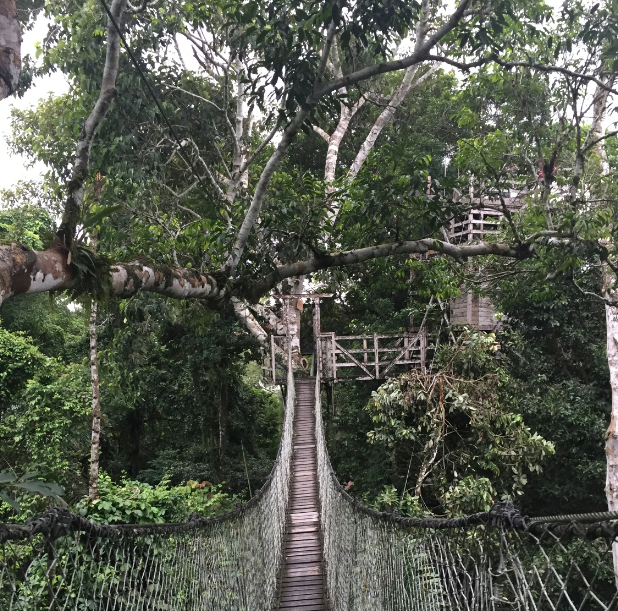 I woke early the next day. Partly because I wanted to get up and explore some more, and partly because the howler monkeys in the tree next to my cabana were having an early-morning party. I took a walk along the riverbank and watched as a small family of agoutis played beneath the cabanas. Tranquillity couldn’t have been better described than by the sight of the sun rising over one of the world’s greatest rivers.
I woke early the next day. Partly because I wanted to get up and explore some more, and partly because the howler monkeys in the tree next to my cabana were having an early-morning party. I took a walk along the riverbank and watched as a small family of agoutis played beneath the cabanas. Tranquillity couldn’t have been better described than by the sight of the sun rising over one of the world’s greatest rivers.
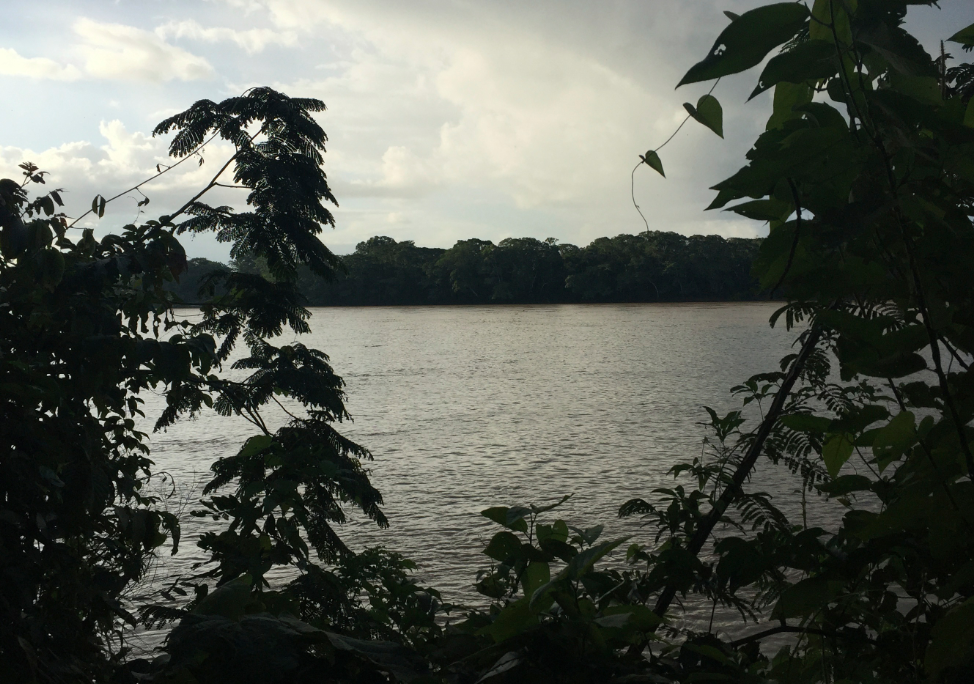 We headed over to Inkaterra Hacienda Concepción after breakfast on the other side of the Madre de Dios river and met with Carlos, our explorer-guide for the day. He took us down to the hotel’s lagoon, where a small dug-out canoe was waiting. I looked down ominously at the murky water, which, every now and then, was disturbed by something moving beneath the surface. Paddling slowly through the waters, we ducked to avoid the low hanging branches as Carlos told us more about Inkaterra and the wildlife in the Tambopata National Reserve.
We headed over to Inkaterra Hacienda Concepción after breakfast on the other side of the Madre de Dios river and met with Carlos, our explorer-guide for the day. He took us down to the hotel’s lagoon, where a small dug-out canoe was waiting. I looked down ominously at the murky water, which, every now and then, was disturbed by something moving beneath the surface. Paddling slowly through the waters, we ducked to avoid the low hanging branches as Carlos told us more about Inkaterra and the wildlife in the Tambopata National Reserve.
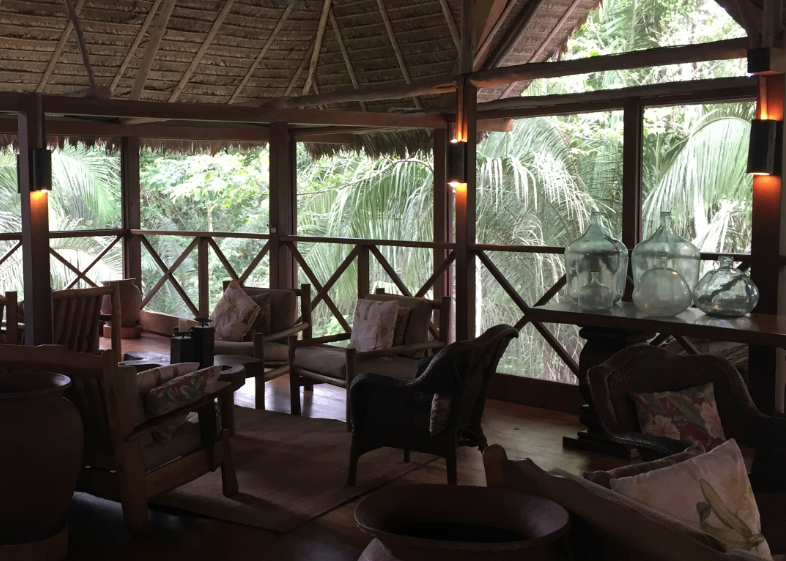
Carlos cuts off mid sentence, his attention grasped by something high up in the trees. I crane my neck to see what it is his hawk-like eyes have spotted. “Let it be a sloth, let it be a sloth,” I pray, over and over again in my head. Seeing my desperate look of anticipation, Carlos shrugs and laughs, “Sorry, it’s not a sloth. It’s a stinky bird!” The Hoatzin bird, affectionately named “Stinky Bird” by locals is rust coloured with a fan of feathers on its head and omits a foul-smelling odour, which has earned it its name.
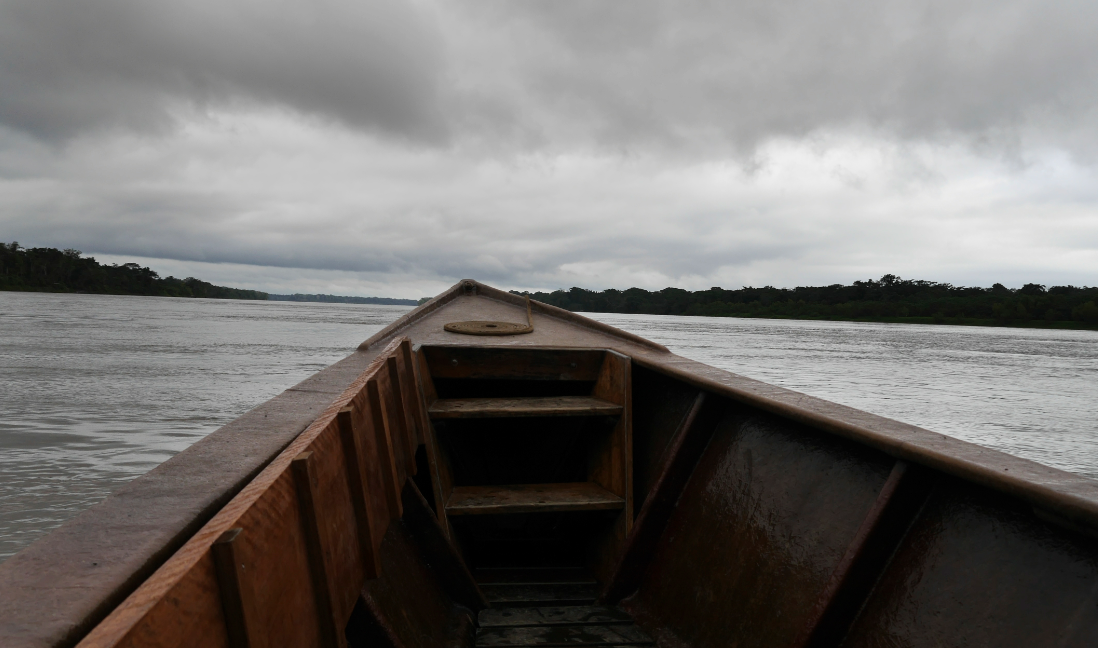
Stories of piranhas, caiman crocodiles and anacondas couldn’t cheer me up as we paddled back toward the hotel. Even a rogue (and slightly suicidal) fish leaping into our boat, much to the shock of many of the group, couldn’t cheer me up. As we docked the canoe and walked towards the hotel, I dragged my feet. And then I felt Carlos grab my shoulder and point – “There, look high up between those two branches”. I followed the line of his finger into the canopy. There I saw it, dangling slightly from a branch, hardly visible due to the dappling of the sunlight – my first sloth.
